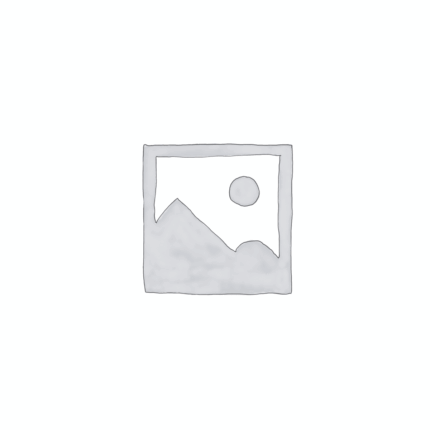Ammonium Lactate
Whatsapp Order
Ammonium Lactate is the ammonium salt of lactic acid, appearing as a clear, hygroscopic liquid or syrupy solution. It is widely used in pharmaceutical, cosmetic, and food industries primarily for its moisturizing, pH adjusting, and antimicrobial properties. In topical formulations, it acts as a keratolytic agent to help exfoliate and hydrate skin, making it popular in treatments for dry, scaly, or ichthyotic skin conditions. Its biocompatibility and mild acidic nature make it a versatile ingredient in various industrial and personal care products.
Categories: Active Pharmaceutical Ingredients (APIs), Acidulants, Animal Feed Additives, Emollients, Excipients, Flavor Enhancers, Humectants, Nutraceutical Ingredients (Pharmaceutical), Preservatives(food), Surfactants(cleaning)
Tags: ammonium lactate, dry skin treatment, eczema relief, moisturizer ingredient, textile conditioning
Description
Ammonium Lactate Uses
Primary Uses
Pharmaceutical & Dermatological Applications
- Used in topical formulations such as creams, lotions, and gels to treat xerosis (dry skin), ichthyosis, and keratosis pilaris.
- Acts as a humectant and exfoliant by promoting skin hydration and mild exfoliation of dead skin cells.
- Incorporated in moisturizers to improve skin softness and elasticity.
- Sometimes used in anti-aging and acne treatment products.
Cosmetics & Personal Care
- Added to lotions, body washes, shampoos, and conditioners as a moisturizing agent.
- Adjusts pH to maintain skin-friendly levels in formulations.
- Enhances product stability and effectiveness.
Food Industry
- Occasionally used as a food additive for pH regulation or as a flavor enhancer, though less common than lactic acid itself.
- May be found in fermented food processing or preservation.
Secondary Uses
Chemical & Industrial Uses
- Used as a pH buffer and stabilizer in various chemical processes.
- Can act as a biodegradable acidulant in cleaning and detergent formulations.
Agricultural Uses
- Employed in certain formulations for soil pH adjustment or as a biodegradable additive in fertilizers.
Pharmaceutical Manufacturing
- Utilized in some drug formulations as a stabilizer or pH adjuster.
KEY ATTRIBUTES
1. Basic Identification Attributes
- Chemical Name (IUPAC): Ammonium 2-hydroxypropanoate
- Common/Trade Names: Ammonium Lactate
- CAS Number: 78391-02-7
- HS Code: 2918.15.00
- Molecular Formula: C3H7NO3
- Synonyms: Ammonium 2-hydroxypropionate
2. Physical & Chemical Properties
- Physical State: Clear, colorless to slightly yellowish viscous liquid or syrup
- Odor: Mild, characteristic lactic acid odor
- Melting Point: Not applicable (liquid)
- Boiling Point: Approx. 200–220°C (decomposes)
- Density: ~1.1 g/cm³
- Solubility: Fully miscible with water; soluble in alcohol
- pH Level: Slightly acidic to neutral (typically 3.5–4.5 in solution)
- Vapor Pressure: Low
- Flash Point: Non-flammable
- Stability: Stable under normal storage conditions; sensitive to prolonged heat and light
3. Safety & Hazard Attributes
- Hazard Class (GHS): Generally regarded as safe; mild irritant
- NFPA Ratings: Health 1, Flammability 0, Reactivity 0
- Exposure Limits: No established occupational exposure limits; low toxicity
- Reactivity: Stable; no hazardous reactions under normal conditions
- Incompatible Materials: Strong oxidizers, strong acids, and bases
4. Storage & Handling Attributes
- Storage Conditions: Store in a cool, dry place away from direct sunlight and heat sources
- Container Type: Sealed plastic or glass containers recommended
- Shelf Life: Typically 2–3 years if stored properly
- Special Handling: Use protective gloves and eyewear when handling concentrated solutions
5. Regulatory & Compliance Attributes
- Regulatory Status: Approved for cosmetic and pharmaceutical use in many countries
- FDA (USA): Generally recognized as safe (GRAS) for cosmetic use
- REACH (EU): Registered chemical substance
- Transportation: Not classified as hazardous for transport
- Waste Disposal: Dispose according to local regulations; biodegradable
6. Environmental & Health Impact
- Ecotoxicity: Low toxicity to aquatic life
- Persistence: Biodegradable under aerobic conditions
- Carcinogenicity: Not carcinogenic or mutagenic
- Biodegradability: Readily biodegradable
SAFETY HANDLING PRECAUTIONS
Safety Handling Precautions
- PPE: Wear gloves and safety goggles to avoid skin and eye contact with concentrated solutions.
- Handling: Avoid inhaling vapors; handle in well-ventilated areas.
- Storage: Keep containers tightly closed; store away from incompatible substances.
- Hygiene: Wash hands thoroughly after handling; avoid ingestion or contact with eyes.
First Aid Measures
- Inhalation: Move to fresh air; seek medical attention if respiratory irritation occurs.
- Skin Contact: Rinse affected area with water; remove contaminated clothing; seek medical advice if irritation persists.
- Eye Contact: Flush eyes with plenty of water for at least 15 minutes; consult a physician if irritation continues.
- Ingestion: Rinse mouth; drink water; seek medical attention if large amounts ingested.
Firefighting Measures
- Fire Hazards: Non-flammable and non-combustible; may emit irritating fumes if heated to decomposition.
- Extinguishing Media: Use water spray, foam, dry chemical, or CO₂ to extinguish surrounding fires.
- Special Precautions: Firefighters should wear protective gear to avoid inhalation of fumes.
Related products
Acid Oil Soya
Acid Oil Soya is a byproduct derived from the refining of soybean oil. It is a dark-colored, free fatty acid-rich liquid containing mainly oleic and linoleic acids. Acid Oil Soya is commonly used in industrial applications such as soap making, animal feed, and as a raw material in the production of biodiesel, lubricants, and other chemicals.
African Potato Extract
African Potato Extract is derived from the plant Hypoxis hemerocallidea, a medicinal plant native to southern Africa. It is commonly used in traditional African medicine for its anti-inflammatory, antioxidant, and immune-boosting properties. The active compound in the extract is hypoxoside, which is converted in the body to rooperol, a potent antioxidant. African Potato Extract is often used as a complementary treatment for conditions like arthritis, prostate issues, and certain infections, though scientific evidence on its effectiveness is still limited.
Amprolium HCL
Amprolium Hydrochloride is a white, odorless, crystalline powder used primarily as a coccidiostat, which means it inhibits the growth of Eimeria species (protozoan parasites) responsible for coccidiosis in poultry and other animals. It works by mimicking thiamine (vitamin B1), thereby competitively inhibiting thiamine uptake by the parasite, disrupting its metabolism, and preventing its proliferation. Amprolium HCl is widely used in veterinary medicine, especially in poultry farming, and is often included in feed or drinking water. It complies with BP 2008 and USP 32 pharmacopeial standards.
Arabic Gum
Arabic Gum, also known as Gum Acacia, is a natural gum harvested from the sap of Acacia trees, primarily Acacia senegal and Acacia seyal. It is a complex mixture of polysaccharides and glycoproteins, valued for its excellent emulsifying, stabilizing, and thickening properties. Arabic Gum is water-soluble, forms clear solutions, and is widely used in the food industry as a stabilizer and emulsifier. Additionally, it finds applications in pharmaceuticals, cosmetics, and printing industries due to its biodegradability, non-toxicity, and versatility.
Beeswax
Beeswax is a natural wax produced by honeybees of the genus Apis. It is secreted by worker bees from specialized glands and used to build honeycomb cells. Beeswax is a complex mixture of esters, fatty acids, and hydrocarbons, characterized by a pale yellow to brown color, a pleasant honey-like aroma, and a firm yet pliable texture. It has excellent emulsifying, binding, and protective properties, making it widely used in cosmetics, pharmaceuticals, food, and industrial applications. Beeswax is prized for its natural origin, biodegradability, and skin-friendly characteristics.
Beta Carotene
Beta Carotene is a high-potency, oil-dispersible formulation of beta-carotene, a natural pigment and antioxidant belonging to the carotenoid family. It is widely used as a colorant and nutritional additive in food, beverages, and dietary supplements. This specific 30% formulation typically consists of 30% beta-carotene blended with stabilizers and carriers (often vegetable oil or gelatin) for improved dispersion and shelf life.
Bismuth subgallate
Bismuth Subgallate is a pale yellow, odorless, tasteless powder composed of bismuth and gallic acid derivatives. It is widely used as an internal deodorant for controlling odor from flatulence and stool, especially in patients with gastrointestinal conditions or post-surgery stomas. It also serves as a mild astringent and has hemostatic properties, making it useful in wound care products. Due to its insolubility in water and stability, it is suited for oral and topical formulations.
Bromelain
Bromelain is a natural mixture of proteolytic enzymes derived primarily from the stem and fruit of the pineapple plant (Ananas comosus). It appears as a pale yellow to off-white powder with a characteristic mild odor and is water-soluble. Bromelain exhibits protease activity, breaking down proteins into peptides and amino acids, making it valuable in medical, food, and industrial applications. It is widely used as an anti-inflammatory agent, digestive aid, meat tenderizer, and in cosmetic formulations due to its enzymatic and therapeutic properties.


 Pesticides (Herbicides, Insecticides, Fungicides)
Pesticides (Herbicides, Insecticides, Fungicides) Animal Feed Additives
Animal Feed Additives Biostimulants
Biostimulants Plant Growth Regulators
Plant Growth Regulators Fertilizers
Fertilizers Soil Conditioners
Soil Conditioners
 Decoratives
Decoratives Dough Conditioners
Dough Conditioners Fat Replacers
Fat Replacers Flour Treatments
Flour Treatments Leavening Agents
Leavening Agents Preservatives(baking)
Preservatives(baking)
 Bleaching Agents
Bleaching Agents Builders
Builders Enzymes
Enzymes Fragrances
Fragrances Surfactants(cleaning)
Surfactants(cleaning) Solvents (cleaning)
Solvents (cleaning)
 Admixtures
Admixtures Anti-Corrosion Coatings
Anti-Corrosion Coatings Concrete Repair Chemicals
Concrete Repair Chemicals Curing Compounds
Curing Compounds Sealants and Adhesives
Sealants and Adhesives Waterproofing Agents
Waterproofing Agents
 Antioxidants(cosmetic)
Antioxidants(cosmetic) Emollients
Emollients Fragrances and Essential Oils
Fragrances and Essential Oils Humectants
Humectants Surfactants(cosmetic)
Surfactants(cosmetic) Thickeners
Thickeners UV Filters
UV Filters Preservatives (cosmetic)
Preservatives (cosmetic)
 Bio-based Solvents
Bio-based Solvents Biodegradable Surfactants
Biodegradable Surfactants Carbon Capture Chemicals
Carbon Capture Chemicals Renewable Polymers
Renewable Polymers Wastewater Treatment Chemicals
Wastewater Treatment Chemicals
 Acidulants
Acidulants Antioxidants
Antioxidants Colorants(food)
Colorants(food) Emulsifiers
Emulsifiers Flavor Enhancers
Flavor Enhancers Nutraceutical Ingredients (food)
Nutraceutical Ingredients (food) Nutrient Supplements
Nutrient Supplements Preservatives(food)
Preservatives(food) Sweeteners
Sweeteners
 Dried Herbs
Dried Herbs Fresh Herbs
Fresh Herbs Ground Spices
Ground Spices Spice Blends
Spice Blends Whole Spices
Whole Spices
 Analytical Reagents
Analytical Reagents Biochemical Reagents
Biochemical Reagents Chromatography Chemicals
Chromatography Chemicals Inorganic and Organic Standards
Inorganic and Organic Standards Laboratory Safety Chemicals
Laboratory Safety Chemicals Microbiology and Cell Culture Reagents
Microbiology and Cell Culture Reagents Molecular Biology Reagents
Molecular Biology Reagents Solvents(lab)
Solvents(lab) Specialty Laboratory Chemicals
Specialty Laboratory Chemicals Spectroscopy Reagents
Spectroscopy Reagents
 Collectors
Collectors Dust Suppressants
Dust Suppressants Explosives and Blasting Agents
Explosives and Blasting Agents Flocculants and Coagulants
Flocculants and Coagulants Frothers
Frothers Leaching Agents
Leaching Agents PH Modifiers
PH Modifiers Precious Metal Extraction Agents
Precious Metal Extraction Agents
 Catalysts
Catalysts Corrosion Inhibitors
Corrosion Inhibitors Demulsifiers
Demulsifiers Drilling Fluids
Drilling Fluids Hydraulic Fracturing Fluids
Hydraulic Fracturing Fluids Scale Inhibitors(oil)
Scale Inhibitors(oil) Surfactants(oil)
Surfactants(oil)
 Active Pharmaceutical Ingredients (APIs)
Active Pharmaceutical Ingredients (APIs) Analgesics and Antipyretics
Analgesics and Antipyretics Antibiotics
Antibiotics Antiseptics and Disinfectants
Antiseptics and Disinfectants Excipients
Excipients Nutraceutical Ingredients (Pharmaceutical)
Nutraceutical Ingredients (Pharmaceutical) Solvents(pharmaceutical)
Solvents(pharmaceutical) Vaccine Adjuvants
Vaccine Adjuvants
 Antioxidants(plastic)
Antioxidants(plastic) Colorants (Pigments, Dyes)
Colorants (Pigments, Dyes) Fillers and Reinforcements
Fillers and Reinforcements Flame Retardants
Flame Retardants Monomers
Monomers Plasticizers
Plasticizers Polymerization Initiators
Polymerization Initiators Stabilizers (UV, Heat)
Stabilizers (UV, Heat)
 Accelerators and Retarders
Accelerators and Retarders Adhesion Promoters
Adhesion Promoters Antidegradants (Antioxidants, Antiozonants)
Antidegradants (Antioxidants, Antiozonants) Blowing Agents (for foam rubber)
Blowing Agents (for foam rubber) Plasticizers and Softeners
Plasticizers and Softeners Reinforcing Agents (Carbon Black, Silica)
Reinforcing Agents (Carbon Black, Silica) Vulcanizing Agents (e.g., Sulfur, Peroxides)
Vulcanizing Agents (e.g., Sulfur, Peroxides)
 Analytical Reagents
Analytical Reagents Automotive chemicals
Automotive chemicals Electronic Chemicals
Electronic Chemicals Lubricants
Lubricants Photographic Chemicals
Photographic Chemicals Pyrotechnic Chemicals
Pyrotechnic Chemicals Refrigerants
Refrigerants Sealants and Adhesives
Sealants and Adhesives
 Antistatic Agents
Antistatic Agents Bleaching Agents
Bleaching Agents Dyes and Pigments
Dyes and Pigments Finishing Agents
Finishing Agents Flame Retardants
Flame Retardants Softening Agents
Softening Agents
 Antifoaming Agents
Antifoaming Agents Chelating Agents
Chelating Agents Coagulants and Flocculants
Coagulants and Flocculants Corrosion Inhibitors
Corrosion Inhibitors Disinfectants and Biocides
Disinfectants and Biocides Oxidizing Agents
Oxidizing Agents pH Adjusters (water)
pH Adjusters (water) Scale Inhibitors( water)
Scale Inhibitors( water)















